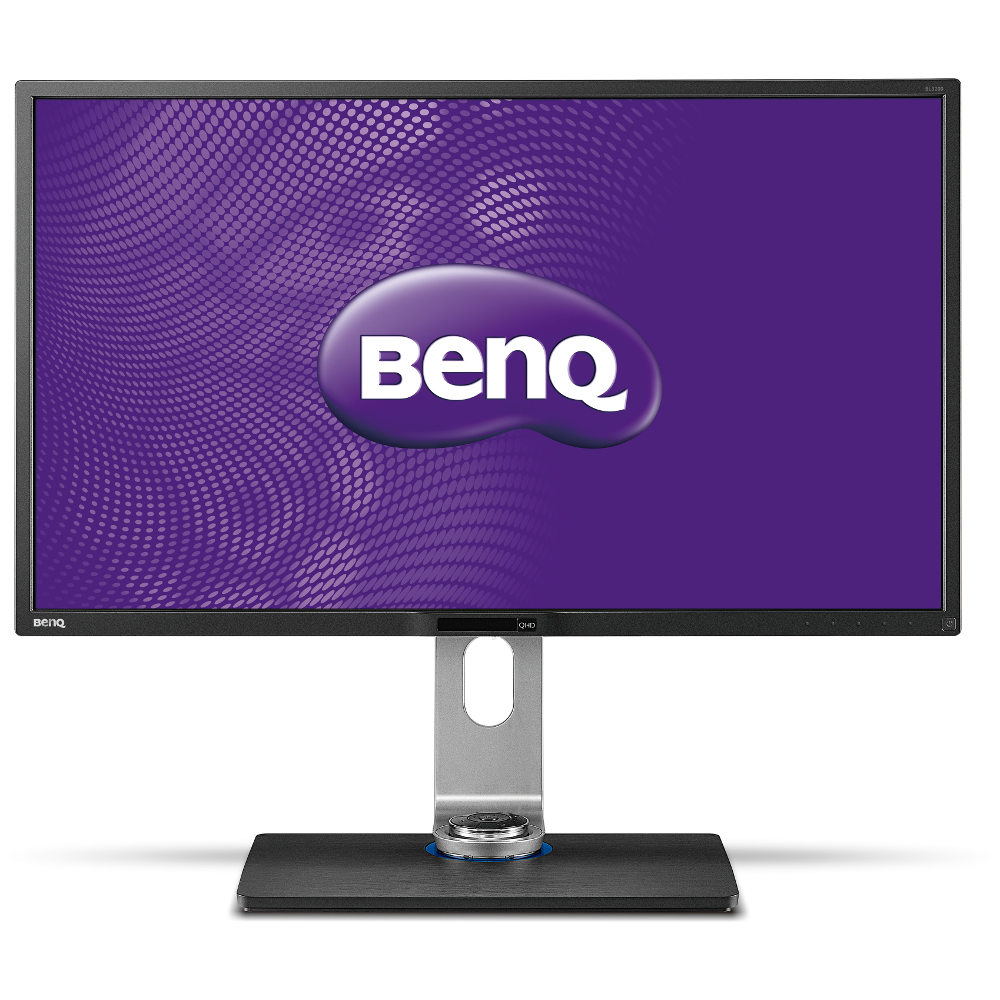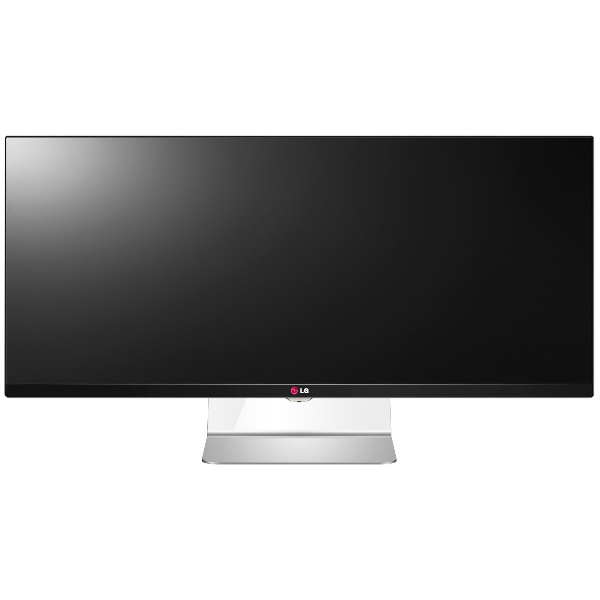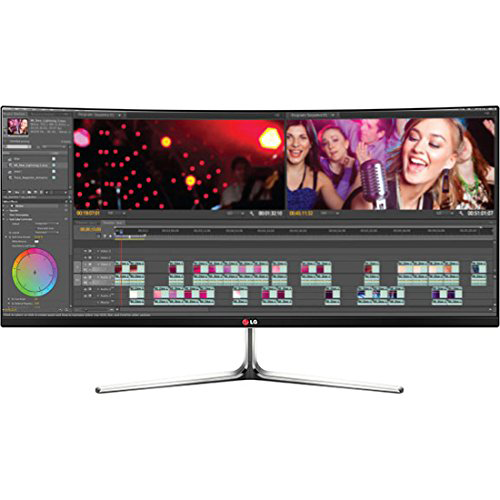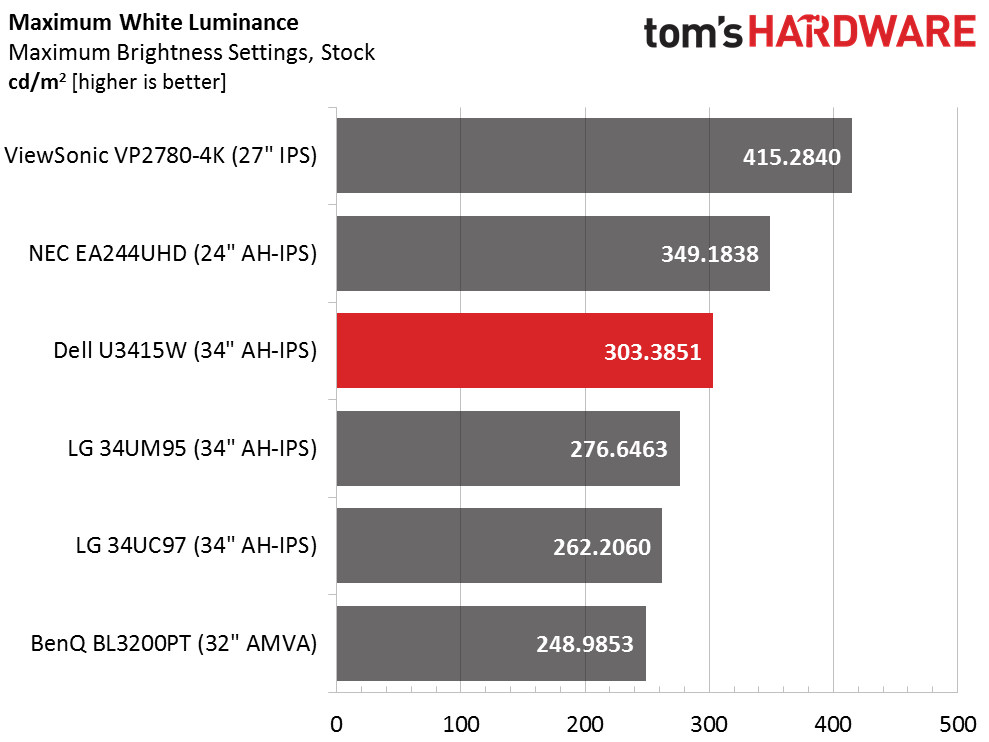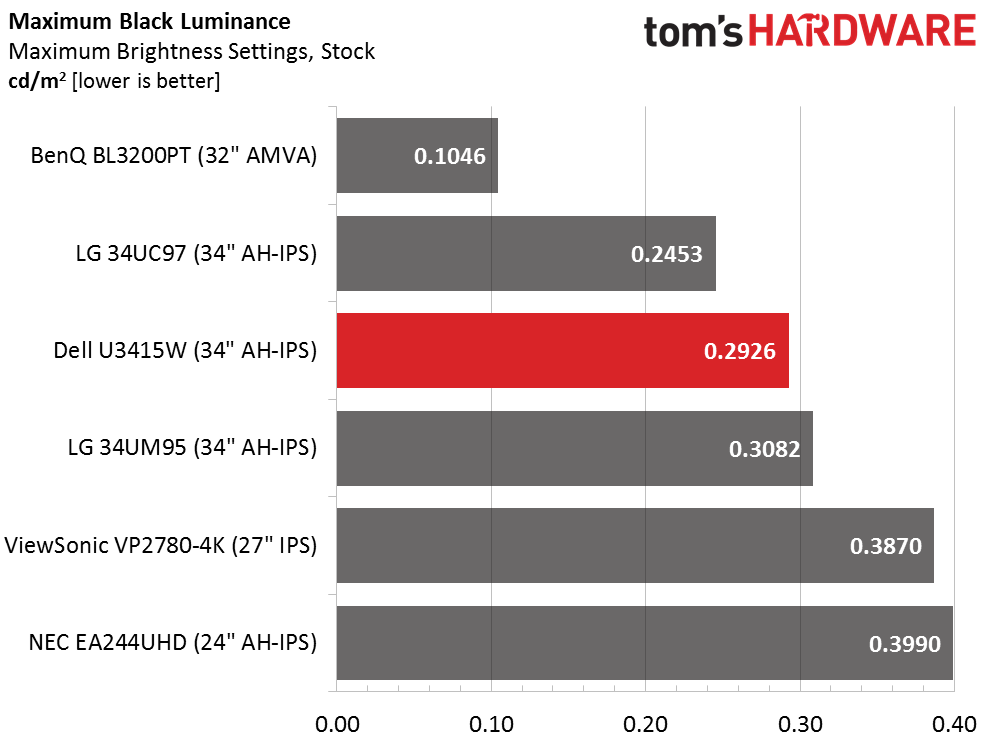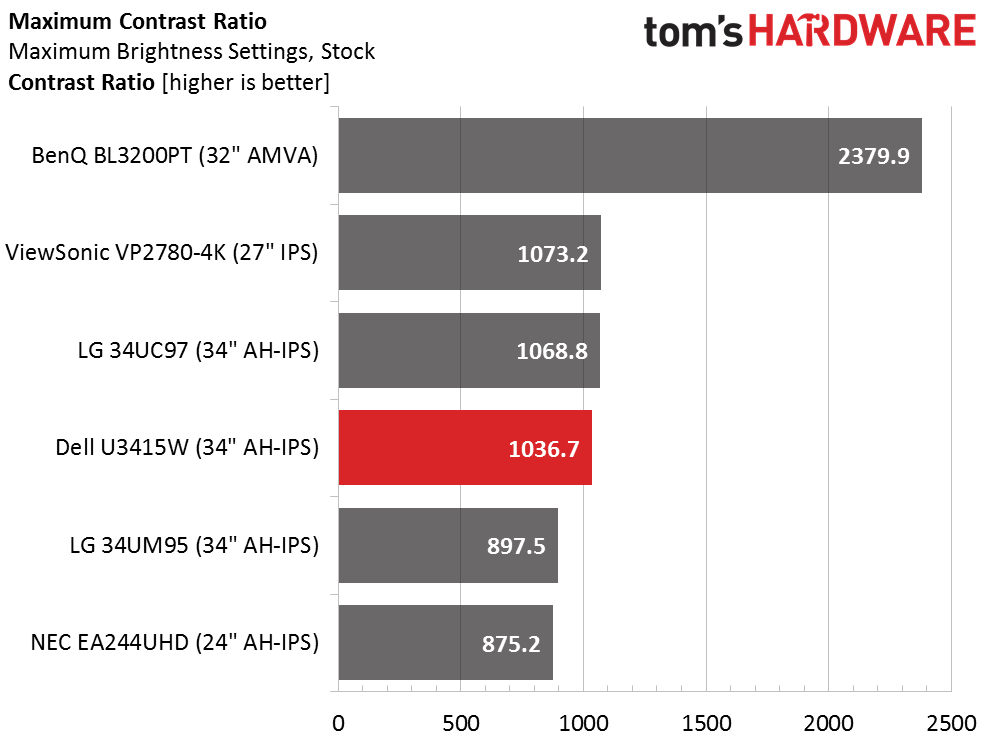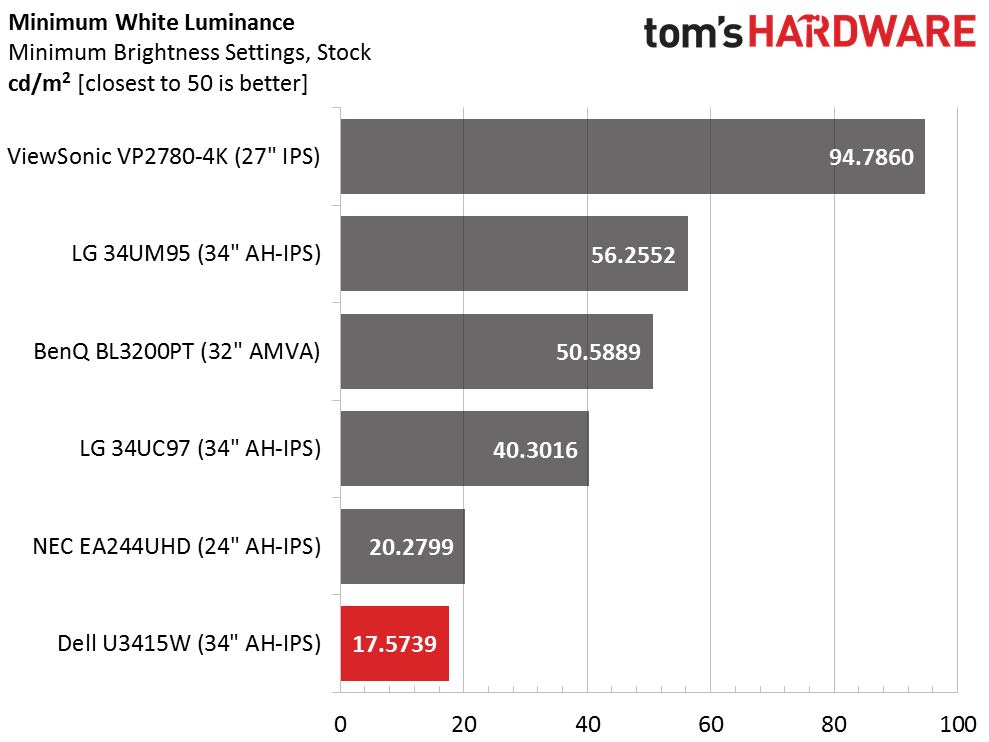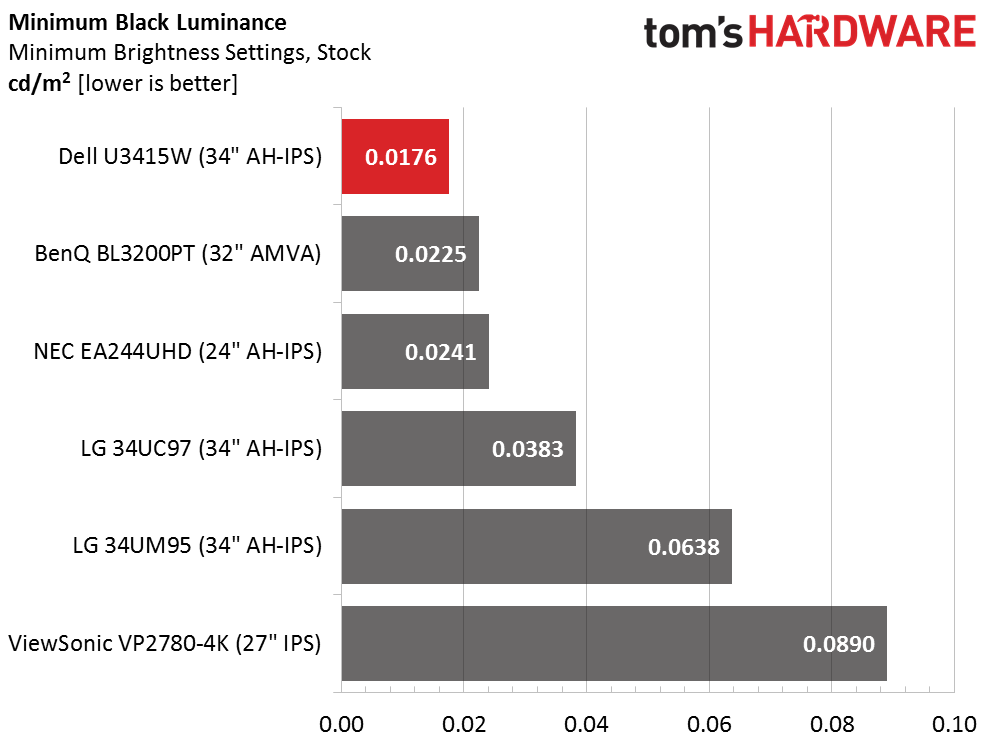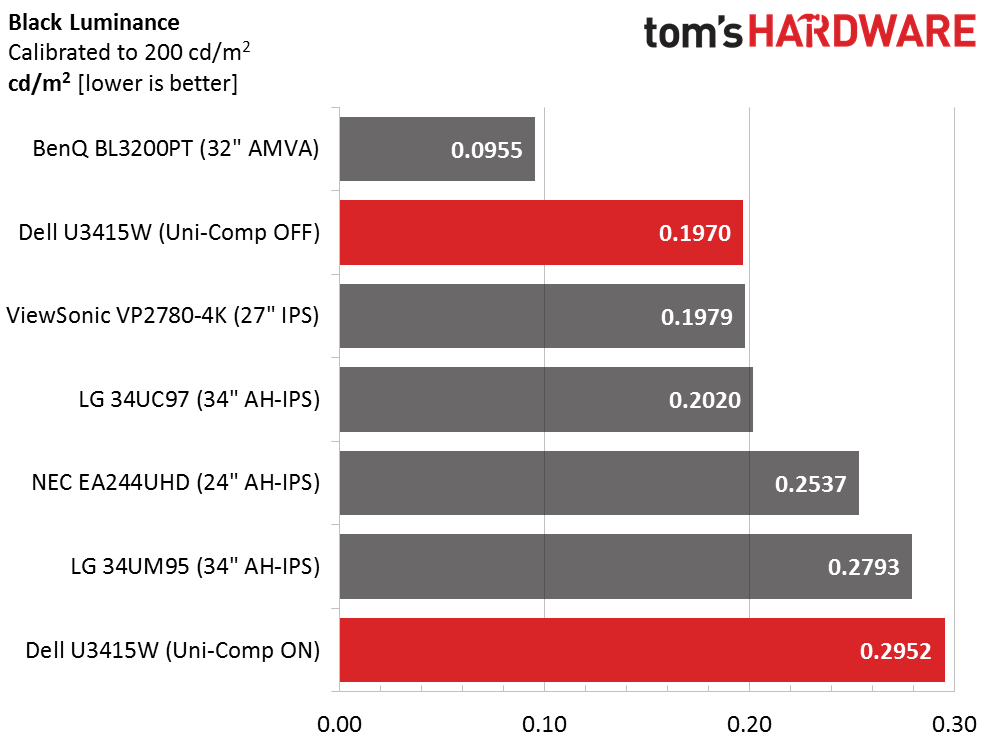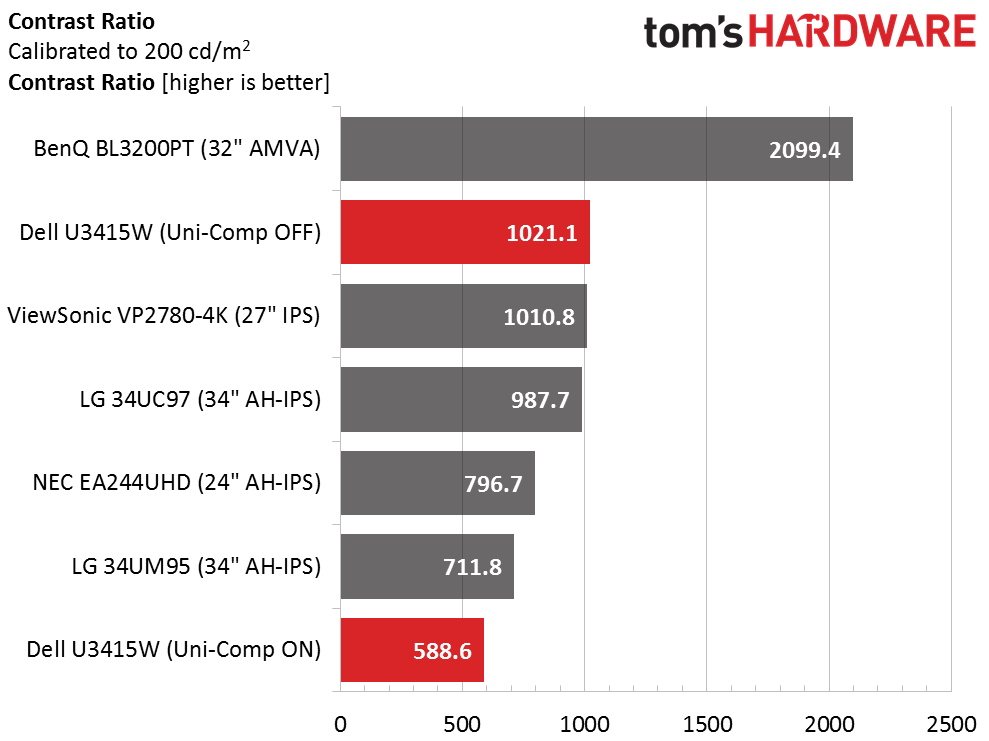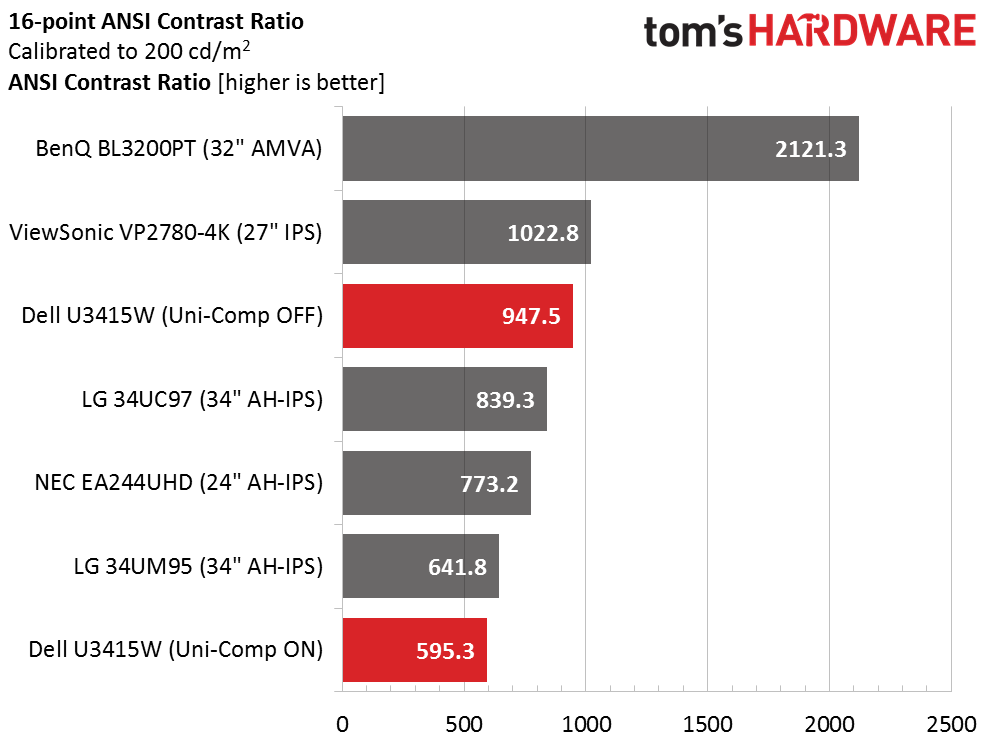Dell U3415W 34-Inch Ultra-Wide Curved Monitor Review
Part of Dell's UltraSharp line, the U3415W is a premium product that promises high performance — and it’s priced accordingly. Does it keep that promise?
Why you can trust Tom's Hardware
Brightness And Contrast
To read about our monitor tests in-depth, please check out Display Testing Explained: How We Test Monitors and TVs. Brightness and Contrast testing is covered on page two.
Today’s comparison group includes the only other curved display we’ve reviewed: LG’s 34UC97. We also have its flat ultra-wide 34UM95. Rounding out the lineup is BenQ’s 32-inch BL3200PT, ViewSonic’s VP2780-4K and NEC’s EA244UHD. All the monitors fall in the $800-$1000 price range.
Uncalibrated – Maximum Backlight Level
It’s difficult to get torch-like brightness from a 34-inch 21:9 monitor, but the U3415W offers more output than both LG screens. If you want a display for outdoor use, the ViewSonic is one of the brightest we’ve tested.
The LG-manufactured panel used by Dell offers a decent maximum black level of .2926cd/m2. LG’s curved screen edges it out just a bit, but if you want truly deep blacks, look no further than the VA-based BenQ BL3200PT.
The U3415W tops our preferred contrast level of 1000:1. It’s using a slightly revised version of the part from LG’s 34UC97, but as you can see, performance is nearly identical. Of course if all monitors could use AMVA parts like the BL3200PT, the world would be a happier place.
Uncalibrated – Minimum Backlight Level
Dell offers a tremendous backlight range of 286cd/m2. You’ll need a completely dark environment to take the brightness down to minimum. For 50cd/m2, set the control on level nine. 17.5739cd/m2 is really dim.
With such a low backlight setting, the U3415W posts an even lower black level than the BenQ. That’s really dark, and one of the lowest measurements we’ve ever recorded.
Get Tom's Hardware's best news and in-depth reviews, straight to your inbox.
Contrast stays fairly consistent throughout the backlight’s entire adjustment range. We’re glad to see that more and more monitors retain their contrast levels at all output values. It’s getting pretty hard to find one that doesn’t, at any price.
After Calibration to 200cd/m2
Since the U3415W is so accurate in its Standard picture mode, we didn’t make any further calibration adjustments for this test aside from setting the output level to 200cd/m2. That’s a value that works in typical office environments. You can see how the uniformity compensation ups the black level by 33 percent.
This is reason enough for us not to recommend the U3415W’s uniformity compensation feature. Contrast is reduced by almost half. The result is a very dull flat picture. And as you’ll see later, our sample posts excellent uniformity numbers without any help.
ANSI Contrast Ratio
The ANSI contrast result drops a little from the on/off figure mainly due to a slight hotspot in our sample’s upper left corner, which raises the black level in that zone. Otherwise, this result would have been much better. Still, we can’t argue with 947.5:1 — that’s solid performance.
Current page: Brightness And Contrast
Prev Page OSD Setup And Calibration Next Page Grayscale Tracking And Gamma Response
Christian Eberle is a Contributing Editor for Tom's Hardware US. He's a veteran reviewer of A/V equipment, specializing in monitors. Christian began his obsession with tech when he built his first PC in 1991, a 286 running DOS 3.0 at a blazing 12MHz. In 2006, he undertook training from the Imaging Science Foundation in video calibration and testing and thus started a passion for precise imaging that persists to this day. He is also a professional musician with a degree from the New England Conservatory as a classical bassoonist which he used to good effect as a performer with the West Point Army Band from 1987 to 2013. He enjoys watching movies and listening to high-end audio in his custom-built home theater and can be seen riding trails near his home on a race-ready ICE VTX recumbent trike. Christian enjoys the endless summer in Florida where he lives with his wife and Chihuahua and plays with orchestras around the state.
-
tom10167 "3440x2160" Anyone else getting tired of seeing this site report glaring errors in almost everything they publish?Reply -
SirGCal Unless I missed it, no mention of sync of either flavor. I'm not buying a new display without one or the other. I've noticed it so much nicer in every enabled task, not just gaming.Reply -
HideOut Thats not 4K. and no, it has no sync. This is more of a pro grade monitor, not a high FPS gamerReply -
GoZFast Well, too bad, its 1220$ here in Canada. I guess I will add it to my list when shopping in NY next time lol Dell brand 34'' ~4K monitor 10bit pro panel with ok speakers is pretty decent for 799$. Its a good tv with those inputs for a small room.Reply -
Tanquen IPS = :)Reply
Curved = :(
21:9 = :(
34” = :( It’s too darn short for a widescreen display. My 30” 2560x1600 already has a taller res.
“By curving the screen just a little, the extra width fits better into the user’s peripheral vision, and reduces the amount of head-turning necessary to see the entire desktop.” Wow, just wow! This is just so wrong.
“the image is not distorted in any way.”
It may not be enough to notice but it totally distorts the screen and nothing you view on it will be shot in such a way. The larger TVs totally have a bowtie effect going on and it’s a total gimmick.
